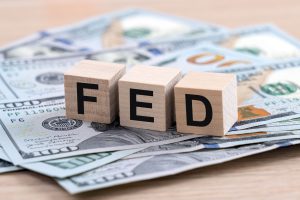The US economy hit turbulence earlier than expected in 2025, showing signs of slowing before the latest trade war measures fully kicked in. After a steady run in 2024, new data suggests that American consumers grew cautious and the ballooning trade deficit started dragging growth before President Trump’s new tariffs took effect.
Bloomberg’s initial projections show the economy expanded at just a 0.4% annualized rate in the first quarter of 2025 — the slowest growth pace in nearly three years. This near-stagnation is raising alarm bells about a possible recession, even as the job market remains surprisingly steady for now.
The labor market has only cooled modestly, with the upcoming employment report expected to show 130,000 new payrolls added in April, a slowdown from the larger gains seen earlier this year. The unemployment rate is projected to remain at 4.2%.
Tariffs Amplify Weakness
While the impact of Trump’s aggressive trade measures is still unfolding, early signs are visible. The GDP report due next week will offer the first glimpse into how the new tariffs — announced April 2 — are reshaping economic momentum.
Businesses and consumers rushed to import and purchase goods like vehicles ahead of expected price hikes, temporarily boosting trade volumes. However, this “front-loading” may have masked underlying weakness.
“Real GDP decelerated sharply in the first quarter to 0.4%, from 2.4% at the end of 2024,” wrote Bloomberg economists Anna Wong, Stuart Paul, Eliza Winger, Estelle Ou, and Chris G. Collins. “The trade deficit was the largest drag, as businesses scrambled to import goods before tariffs hit.”
Business investment, especially in commercial aircraft, provided a rare bright spot, but sentiment among companies has since grown cautious. Many are holding off major spending decisions while awaiting clarity on tariffs, trade negotiations, and tax policy shifts.
Consumer Anxiety Mounts
Consumer behavior is also shifting. Households, rattled by fears of rising prices and job insecurity, are tightening their belts. Surveys show growing consumer pessimism, echoing the slowdown seen in GDP figures.
The latest Bloomberg survey of economists now forecasts GDP growth below 1% for the first three quarters of 2025, with private investment expected to retrench further. Meanwhile, a key report on personal consumption and income due next week is expected to show March spending was healthy, but income growth is softening.
There’s a silver lining: inflation could finally cool. Economists expect Wednesday’s report to show a moderation in the Federal Reserve’s preferred inflation measure, offering hope that aggressive rate hikes won’t be needed.
While official recession calls have yet to be made, early 2025 data paints a picture of an economy losing altitude — even before the heaviest tariff impacts arrive. If consumer spending and business investment falter further in the coming months, the risk of a mild, policy-driven recession will only grow.







